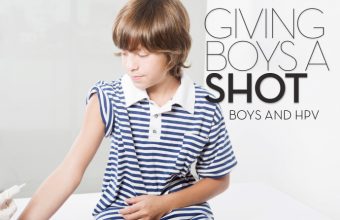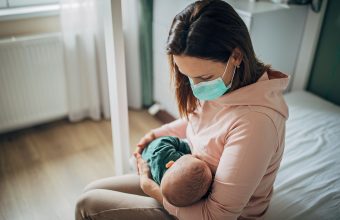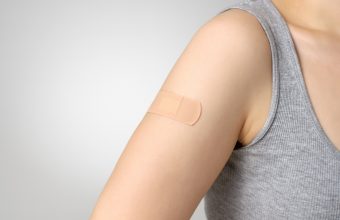Starting this school year, three more provinces will expand their school-based HPV immunization program to include both male and female students (as opposed to only female students), bringing the tally to six. All provinces and territories offer the vaccine to girls, but the tally of who offers the vaccine to both sexes is changing. Here’s where things stand currently:
- Alberta offers the vaccine to boys and girls in Grade 5.
- British Columbia offers the vaccine to girls in Grade 6, and to boys considered vulnerable or high-risk.
- Manitoba offers the vaccine to girls and boys in Grade 6.
- New Brunswick offers the vaccine to girls only, starting in Grade 7.
- Newfoundland and Labrador offers the vaccine to girls only, starting in Grade 6.
- Nova Scotia offers the vaccine to girls and boys in Grade 7.
- Ontario will now offer the vaccine to both boys and girls starting Grade 7.
- Prince Edward Island offers the vaccine to boys and girls in Grade 6.
- Quebec will now offer the vaccine to boys and girls starting Grade 4.
- Saskatchewan offers the vaccine to girls in Grade 6, and boys with HIV.
HPV is a widespread, sexually transmitted virus that can lead to cervical cancer as well as other genital, anal and oral cancers. This vaccine protects against the most common cancer-causing strains of HPV.
Many parents are pleased that their sons will now have access to the same vaccine protection as their daughters. But for others this announcement has stirred up many questions and concerns about the safety and efficacy of the HPV vaccine.
I spoke with Dr. Shelley Deeks, the medical director of Immunization and Vaccine-Preventable Diseases for Public Health Ontario to find the answers to those questions.
RK: Even though I think the pendulum of popular opinion has swung back in favour of trusting that the vaccines given in infancy are beneficial for everyone, there is still a great deal of distrust and worry about the HPV vaccine.
SD: The first HPV vaccine was licensed in 2006 and there was concern—I remember a Maclean’s article—about how quickly the vaccine was introduced into publicly funded vaccine programs across the country after being licenced. As a vaccine specialist, I found that interesting because here we have a safe and effective vaccine, the clinical trials of which were absolutely huge, that was one of the first vaccines to protect against a cancer. Such a backlash is also intriguing to me as a mom. I can understand that with anything new there are a lot of questions, but as the years have progressed there has been more and more acceptance.
RK: There are online articles being shared that claim the risk of serious side effects such as blood clots, stroke, paralysis, and death is greater than the risk of HPV-caused cancer. Is there any truth to these articles? What are the reported side effects of this vaccine? Is it safe?
SD: We have a very serious safety surveillance system in this country and globally and we are continually monitoring the safety of vaccines. They are examined prior to licensure (and vaccines are licensed based on both their safety and their effectiveness), but afterward we monitor at the local and provincial level and feed that to the national level and then globally. So within Ontario, we look at the HPV vaccine and we have never seen anything concerning in the data that we’ve looked at. Globally, because of the amount of interest with this vaccine, the Global Advisory Committee on Vaccine Safety repeatedly looks at it. The last time they looked at it was in December 2015. All the data are on their website. After 200 million doses distributed worldwide there have not been any safety concerns.
But can people get side effects? Absolutely. The most common ones are local side effects like pain, swelling, and a bit of redness. When my boys got the vaccine, their arms were sore.
RK: So you don’t see any of the more serious side effects like blood clots, stroke, paralysis, and even death?
SD: No. One of the challenges with safety surveillance is that if someone has been vaccinated and then has an event coincidentally occurs at the time of vaccination, then the vaccine often gets blamed. An analogy that I make is that if someone is vaccinated and then wins a gold medal, we don’t attribute that to the vaccine. However, if someone was vaccinated, got on their bike without a helmet and then got into an accident, people would potentially equate the two, whereas they are just coincidental events.
RK: How can we know the long-term effects of such a new vaccine?
SD: Prior to licensure, there are safety concerns that are met. Then we continue to monitor to see if we see any unusual safety signals.
RK: Will we require booster shots every few years?
SD: With any vaccine, when they’re newly licenced, we know how effective they are but we don’t know if there will be waning immunity. So we follow the vaccine, so we can understand if we will need something like a booster dose. When varicella (chicken pox) was introduced we thought we only needed one dose, but over time we did find waning immunity and a second dose was recommended to provide optimal protection. Will another dose of HPV be ultimately recommended? We can’t say for certain right now. But we can say that we’ve followed this vaccine for ten years and at this point in time it doesn’t look like another booster dose will be needed.
RK: Why do we give children protection against a sexually transmitted infection so young?
SD: First of all, the immune response in tweens is very robust. But the most important consideration is that this vaccine protects the best when you’ve never had an exposure to the virus. So you need to get it into arms prior to kids being sexually active. None of us knows when our kids are going to be sexually active; all of us want to think that our kids are not going to be until they are older. But none of us have a magic wand; we have no idea. We want to make sure we get the vaccine into individuals prior to their sexual debut because it’s in the first two years of their sexual debut that a lot of people acquire this virus.
RK: How is the vaccine better than regular PAP tests that monitor for abnormal cervical cells for girls?
SD: It’s really about primary versus secondary prevention. Primary prevention prevents you from getting a disease, secondary prevention (like cervical screening) captures a disease in an early stage. In my mind, primary prevention is always the best choice. Like wearing a seat belt would be better than intervening after an accident has happened. Secondary prevention is absolutely important, but primary prevention actually prevents a disease from occurring which is the best case scenario.
And, of course, women need to continue having regular PAP smears.
SD: Absolutely.
RK: Why did we only vaccinate girls at first? Is HPV more dangerous for girls?
SD: In 2006 when the vaccine was first licensed in Canada and the US, it was only for females and that was a virtue of the fact that the most prevalent outcome associated with HPV (outside of anal and genital warts)—the most common cancer outcome—was cervical cancer. HPV is also associated with other cancers, but they are much less common. So the original clinical trials were focused on females with the outcome of looking at the course of illness to prevent cervical cancer and PAP smear changes and that’s how the vaccine was first licensed. It wasn’t licensed for boys until 2011. That’s why we see that delay. Although cervical cancer is actually a more common cancer outcome, there are other cancers associated with HPV, including anal, penile and a proportion of mouth and throat cancers.
RK: Is the vaccine mandatory for girls and boys now?
SD: Thre is always a choice. And this is not one of those vaccines that parents will get a public health letter about. Parents and kids need to make a choice about whether or not they will receive the vaccine. The dilemma that I face is that we need to more clearly communicate the benefits of the HPV vaccine. We need to make it clear to parents how effective this vaccine is. It protects against cancer and it is safe.
RK: Any tips for anxious kids getting the shot at school?
SD: First, have a discussion. If parents know beforehand that the kids are getting vaccinated (and it’s more than just HPV in grade 7; it will also be meningococcal and hep B), then just talk to them about it. Talk about what’s going to be involved. It’s important to indicate that it is going to hurt. But there are things that they can do that will help. For example, distracting themselves with music or reading is relatively easy to do and there is evidence that it works.
RK: Can older teen boys get vaccinated for HPV now? How about adults? Would it be covered?
SD: For non-eligible individuals, the vaccine can be purchased privately. Speak with your healthcare provider for more information.
RK: This vaccine only protects against certain strains of HPV. Are there other cancer-causing strains that are out there?
SD: The HPV vaccine strengthens a person’s immunity to provide protection against HPV (without the risk of getting the disease). The HPV vaccine used in Ontario’s HPV immunization program protects against four types of HPV—types 6, 11, 16 and 18.
These four types of HPV cause approximately 70% of cervical cancers, 92% of anal cancers, 63% of penile cancers, 89% of mouth and throat cancers related to HPV and most cases (greater than 90%) of genital warts related to HPV.
Editor’s Note: For more information on the HPV vaccine, we recommend visiting Caring for Kids, a child and teen health and well-being focused site from the Canadian Paediatric Society.
Tagged under: vaccine,HPV Vaccine,HPV
Category: babies-kids






